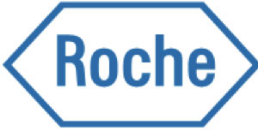List of Controlled Drugs Commonly Encountered in the Lab
Scientists can encounter a long list of controlled drugs in a laboratory setting, and controlled drug regulations must be adhered to for the safety of those working with or around them. Because of the vast number of controlled drugs, in this blog post, we will only cover four ways that they are commonly found in a laboratory: assay standards, intermediates for synthesis, library compounds, and precursor chemicals.
Assay Standards
Some assays use standards and controls which are themselves controlled substances and already on the controlled drugs list. These are common in pain, depression, anxiety, and general neuroscience projects, but they are often given an internal ID, reducing the awareness that they are still controlled substances.

Intermediates
Many intermediates and building blocks used for synthesis are considered controlled substances.
The reason for placing these intermediates on the controlled drugs list is that they are close analogues and can be used to synthesize controlled substances, so use must be monitored and controlled closely. An excellent example of such substances includes phenethylamines and tryptamines, analogues of which are on the controlled substances lists in many countries.
Precursor Chemicals
Precursor chemicals are on the controlled drugs list because they can be used to manufacture controlled substances. These include precursor reagents and solvents used to synthesize and purify controlled substances.
Some of these chemicals include acetone, which is used in the production of cocaine and other narcotics. Other chemicals include potassium permanganate and sulphuric acid. These substances are often found in laboratories because they are a key components in general synthesis and drug manufacturing processes. Precursor regulations are amount-dependent and require record keeping and reporting beyond these limits. However, even in R&D settings these limits can be reached, for example in stockrooms.
Library Compound
Some library compounds can be controlled substances even if novel and proprietary. This has stemmed from previous drug synthesis programs targeting CNS targets such as pain, addiction, anxiety, and depression. At the time of synthesis, these chemicals were not controlled. However, they are now on controlled as analogues of chemicals with known human abuse liability. Another common way controlled substances are found in chemical libraries is through the provision of assay standards, as outlined above.
Check Controlled Substances Lists with Scitegrity’s Controlled Substances Squared (CS2)
Scitegrity has developed a software system that can rapidly identify chemicals against controlled substance lists all over the world. Our Controlled Substances Squared software will tell you if, how and where your chemical is controlled or regulated, if its proprietary and novel. This also includes checks against legislative requirements like all ethers, esters, salts, stereoisomers and controlled areas of chemical space around named substances.
In addition to the above, the software can check controlled lists from over twenty-eight countries and search through tens of thousands of chemicals in a single upload. This software is easy to use, but detailed guidance and technical information can be found with a single click on the system.
For more information on our Controlled Substances Squared (CS2) software, or if you require assistance with controlled drugs, reach out to us today, and one of our experts will be able to help.
Trusted by our Clients











